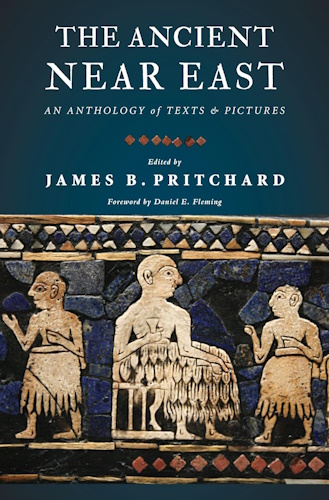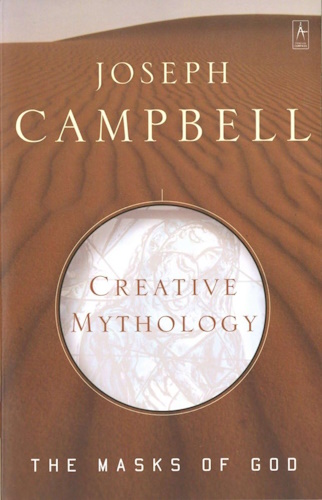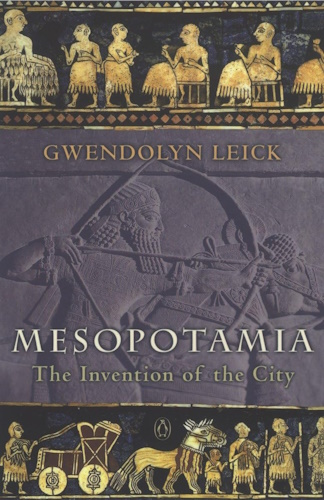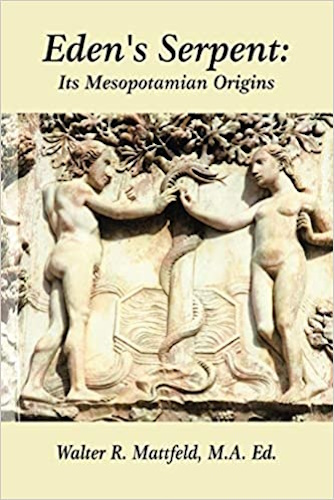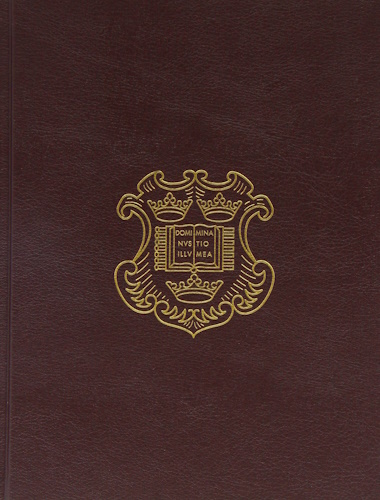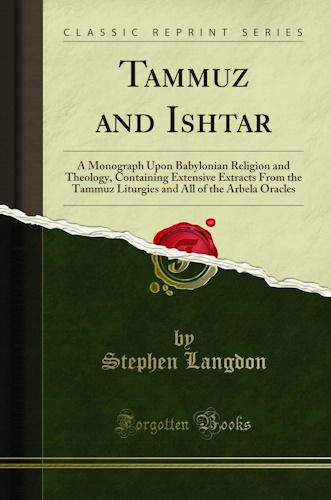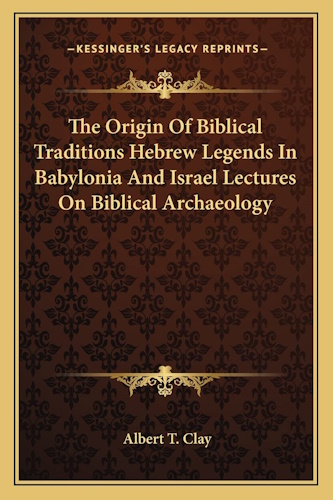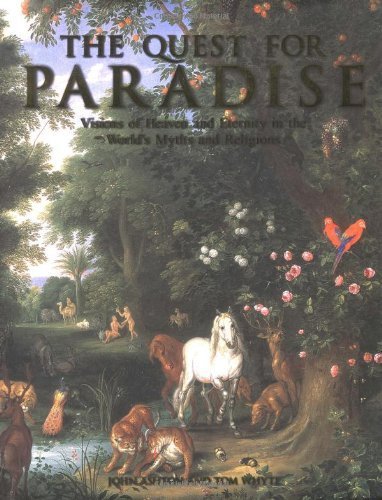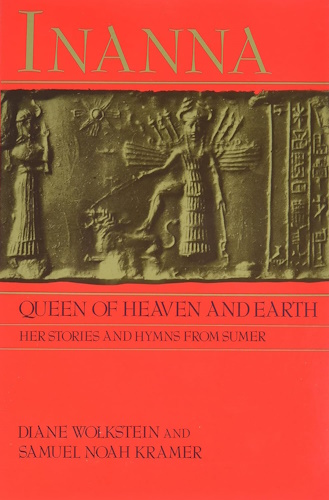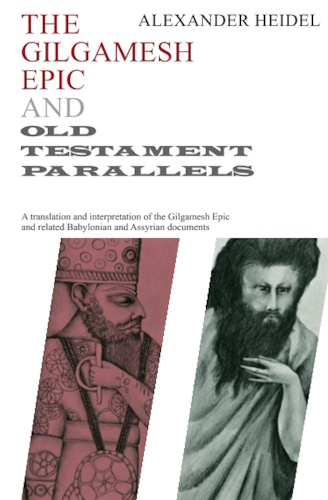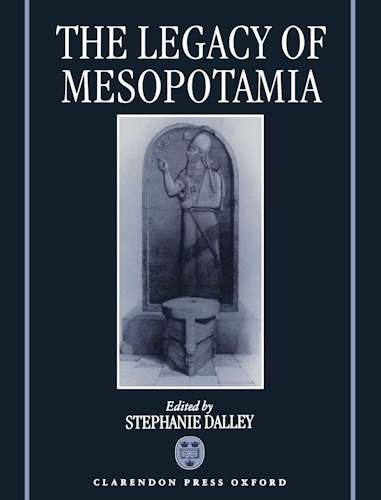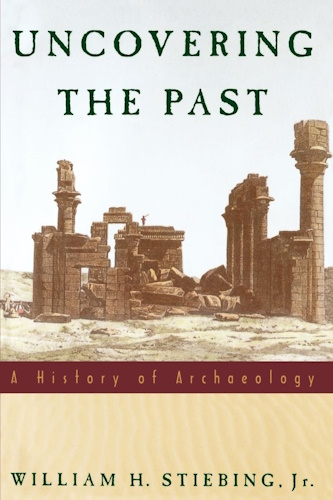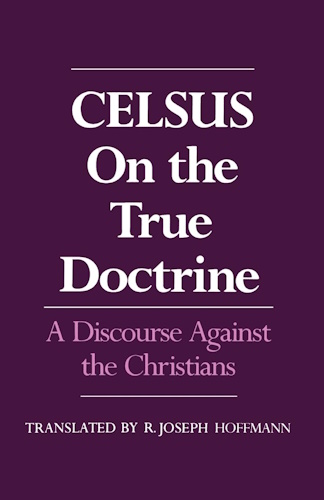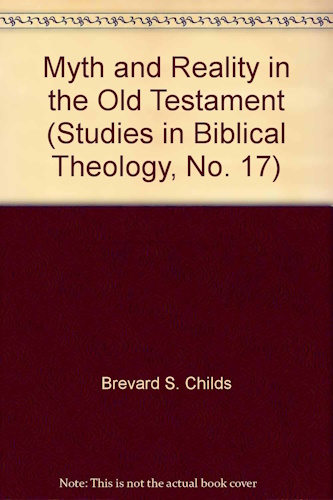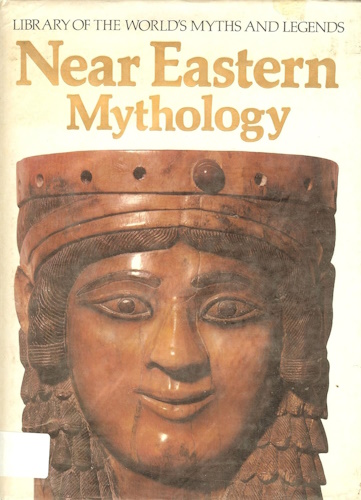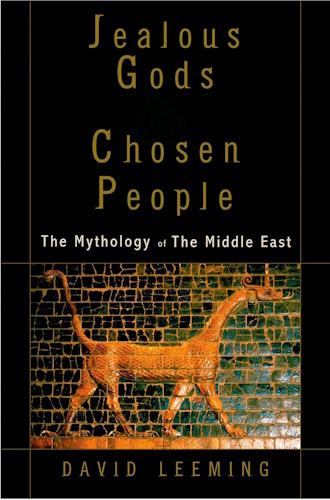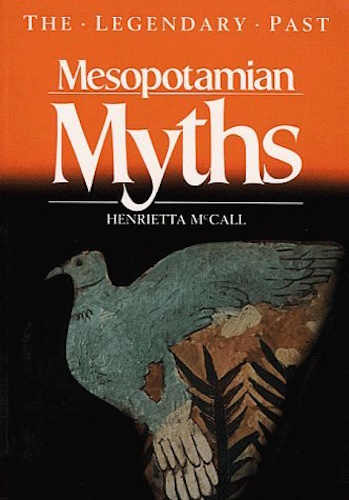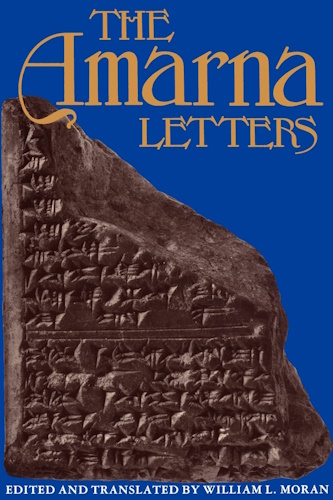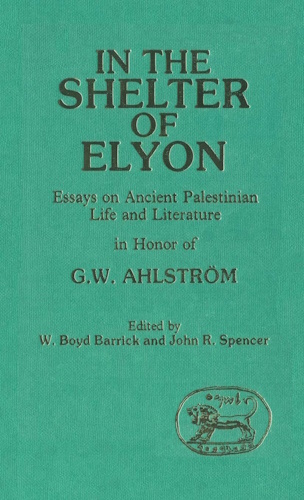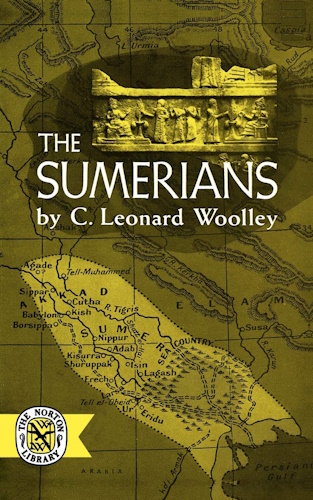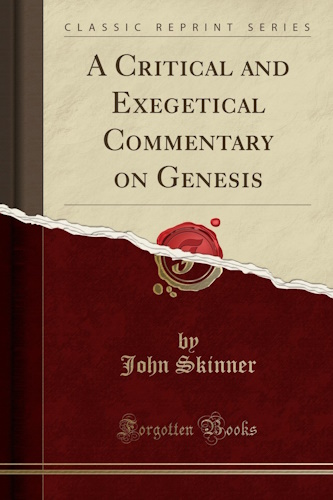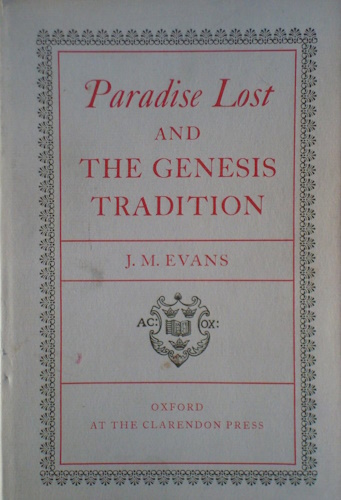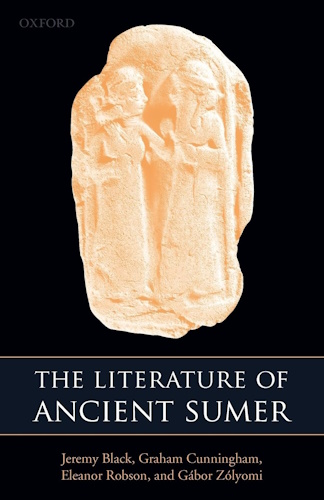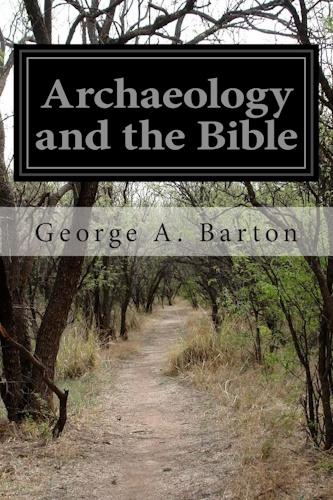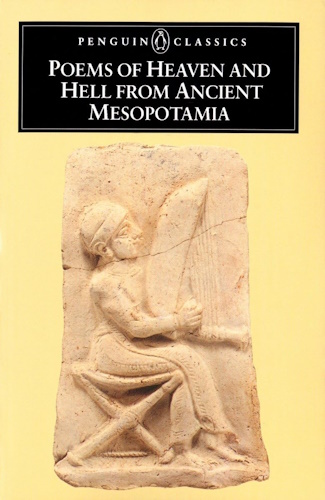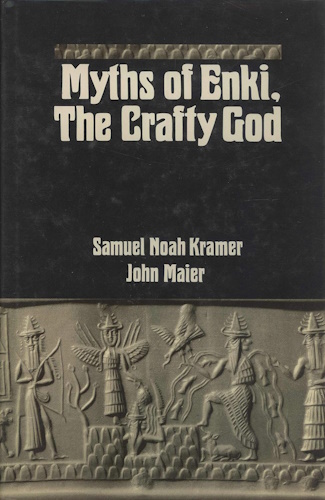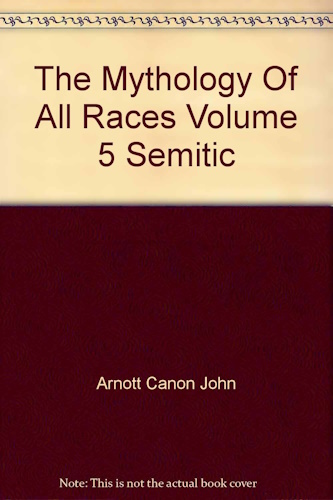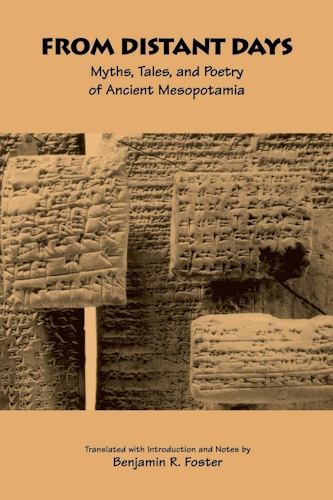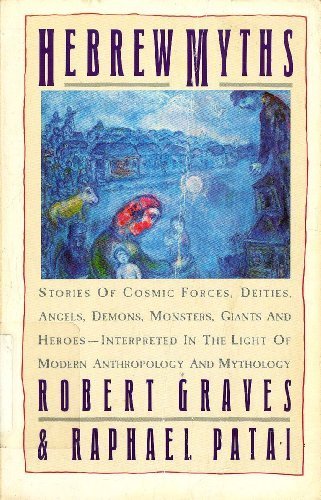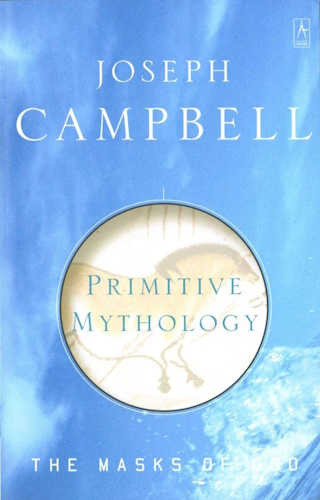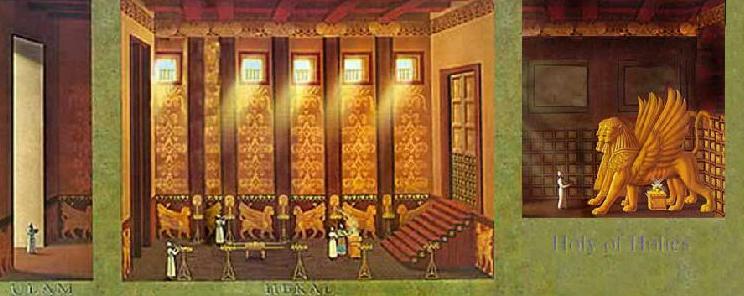![]()
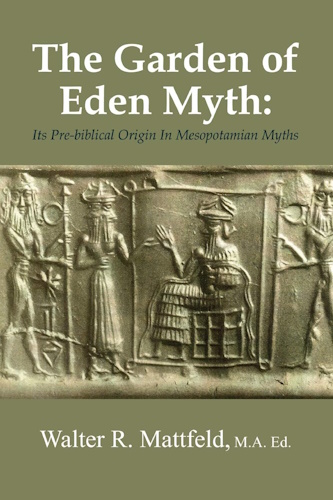
Bible Origins
Dilmun·Tilmun·Telmun
"The Sumerian Paradise"
or
Pre-biblical Prototype
for the "Garden of Eden"
has not been "correctly" identified yet
as of 2008
Part Two
by
Walter Reinhold Warttig Mattfeld y d la Torre, M.A. Ed.
e-mail contact
05 February 2005
Revisions through: 04 July 2008
![]()
Please click here for Sumerian Dilmun being Umm Daleimin by Qurnah?
Dilmun's importance to some biblical scholars is that this location may have been a pre-biblical "prototype" of the Bible's Garden of Eden. I agree that it is "one of SEVERAL pre-biblical prototypes." However, NO Mesopotamian text mentions man being created for the purpose of working a god's garden in Dilmun. When man is described being made in Mesopotamian texts it is at three different locations:
(1) Eridu (man being made by Enki); (2) Nippur (man being made by Enlil and Enki); (3) Babylon (man being made by Marduk). In each of the three locations it is stated that man has been made to serve the gods and relieve them of the hard toil they endured making the irrigation canals and keeping them clear inorder to grow food that the gods must consume from their earthly city-gardens. Now man will clear the irrigation ditches, man will plant, harvest and prepare food for the gods to consume. The gods will enjoy an eternal rest from agricultural toil at man's expense. In regards to Dilmun, Atrahasis and wife are placed here after the Flood and given immortality and they are to be free of any agricultural toil like the gods. The problem? Dilmun is also described as a city with a king, houses, docks, fields of date-palms, fields of barley, and lagoons of fish and near a river. Obviously people are living here, and working the gods' gardens or fields, so Atrahasis (Ziusudra, Utnapishtim) and wife are NOT its only inhabitants.
The "Eridu Genesis Myth" (translated by Professor Thorkild Jacobsen in 1981) speaks of naked man wandering the steppe with animals for companions. He knows no fear, because no animals exist "yet" to harm him like lions, hyenas, and snakes. In the below myth Nintur takes man from his wanderings in the setppe and has him build cities for the gods in high desert (edin the steppe/plain):
"Mankind's trails when forgotten by the gods were in the high (i.e., not subject to flooding) desert. In those days no canals were opened, no dredging was done at dikes and ditches on dike tops. The seeder plow and plowing had not yet been instituted for the knocked under and downed people. Mankind of (those) distant days, since Shakan (the god of flocks) had not (yet) come out of the dry lands, _did not know arraying themselves in prime cloth_, MANKIND WALKED ABOUT NAKED. In those days, there being NO SNAKES, being NO SCORPIONS, being NO LIONS, being NO HYENAS, being NO DOGS, being NO WOLVES, MANKIND HAD NO OPPONENT, FEAR AND TERROR DID NOT EXIST. [The people had as yet no] king. Nintur was paying attention: Let me bethink myself of my mankind, (all) forgotten as they are; and mindful of mine, Nintur's creatures let me bring them back, let me lead the people back from their trails. May they come and build cities and cult-places, that I may cool myself in their shade; may they lay the bricks of the cult-cities in pure spots, and may they found places for divination in pure spots ! She gave directions for purification, and cries for quarter, the things that cool (divine) wrath, perfected the divine service and the august offices, and said to the (surrounding) regions: "Let me institute peace there !" When An, Enlil, Enki, and Ninhursag fashioned the darkheaded (people) they had made the small animals (that came up) from (out of) the earth in abundance and had let there be, as befits (it) gazelles, (wild) donkeys, and fourfooted beasts in the desert...he (i.e., the king)...laid the bricks of those cities...The firstling of those cities, Eridu she [Nintur] gave to the leader Nudimmud [Enki/Ea]...[man] dredged the canals, which were blocked with purplish (wind-born) clay, and they carried water. Their [man's] cleaning of the smaller canals established abundant growth." (pp. 160-161. Patrick D. Miller, Jr. "Eridu, Dunnu and Babel: A Study in Comparitive Mythology." pp. 143-168. Richard S. Hess & David Toshio Tsumura. Editors. I Studied Inscriptions From Before the Flood, Ancient Near Eastern, Literary, and Linguistic Approaches to Genesis 1-11. Winona Lake, Indiana. Eisenbrauns. 1994. ISBN 0-931464-88-9, citing from Professor Thorkild Jacobsen's translation. 1981. "The Eridu Genesis.")
The steppe is described by Shamhat, speaking to Enkidu, as "let us leave this place of desolation, berift of shepherds" (in The Epic of Gilgamesh). It is not seen as a paradise at least from civilized man's point of view.
Nintur (in the so-called Eridu Genesis myth) is portrayed as feeling "pity" for "knocked down" naked man wandering the uncultivated steppe (Akkadian seru, earlier Sumerian edin) with animals. She will take him from this place and have him build cities, plant fields and provide dwellings and food for the gods.
Enlil has man "made" to be an agricultural laborer in his city garden at Nippur, replacing the Igigi gods who have rebelled against the onerous working conditions.
Enki makes man at Eridu to replace the rebelling Igigi in his city garden. The Igigi gods will attain rest from agricultural toil as already enjoyed by the Anunnaki gods (Enki and Enlil) with man replacing them as agricultural laborers.
Work in the god's gardens of Nippur and Eridu is not idyllic, it is a back-breaking hell, which the Igigi are relieved to be done with. The Anunnaki gods gods were not interested in fellowshipping with the Igigi, nor man. They ruthlesssly exploit both.
Man is not portrayed as dwelling in a paradisical location in Mesopotamian myths (except for Dilmun where Atrahasis, like a god, does no labor). Whether it is the semi-arid uncultivated steppe lands called in Sumerian edin were wild animals roam or a god's city garden in edin, neither is an idyllic paradise. Man's improvement is when the gods decide to introduce him to civilization and life in cities.
I understand the Mesopotamian notions of how and why man came to be made and his relationship with the gods are being DELIBERATELY RECAST AND TRANSFORMED IN ORDER TO BE _refuted, denied and challenged_ by the Hebrews. I understand that the Hebraic concepts are inversions or reversals of Mesopotamian beliefs (They turn some of these beliefs upside down and on their head) The Hebrews apparently had a more "loftier" image of God and his caring for man whom he created. Man was not an afterthought, he was the pinnacle of creation, he would enjoy God's fellowship in God's garden.
I am unaware of any Mesopotamian myth associating Dilmun with the Sumerian edin, an uncultivated semi-arid or desert-like plain or steppe between the Tigris and Euphrates rivers where wander wild animals and shepherds with their flocks of sheep and goats. Instead Dilmun in the myths is identified as being an island surrounded by a sea, it is not "in" an edin.
In Genesis God places man in his garden in order to care for it, "to till it and keep it" (Ge 2:15). No mention is made in Mesopotamian myths of a man being created to care for the gods' garden in Dilmun. We are informed that Utnapishtim and wife are placed by the gods in Dilmun after the Flood and given immortality, but they will NOT have to bear the burden of agricultural toil that is man's lot in the gods' city-gardens in edin (Akkad and Sumer). However, in the Mesopotamian annals it is clear that Dilmun has a king, boat wharfs, feilds of barley, and date palms. So, man does indeed work the gods' gardens there. The "absurdity" is that Utnapishtim and wife do no work at this location and have been granted immortality for having saved the "seed of mankind" from the Flood, making possible mankind's continued service of the gods, working in their city gardens in edin the plain between the Tigris and Euphrates rivers (ancient Akkad and Sumer).
Dilmun has been identified with the Garden _in_ Eden because there is no toil for Enki or Utnapishtim (also called Atrahasis or Ziusudra), life "is" idyllic, there is no death here no old age. Yet in Genesis Adam is not to loaf about in idleness, he has a job, caring for Yahweh's garden. Dilmun being a real place with real people did experience disease, death and a struggle for existence like all other men.
The notion of a woman being made of man's rib is unknown in Mesopotamian myths. In Dilmun, Enki's rib hurts him so Ninhursag makes a goddess called Nin-ti "lady of the rib" to heal him, but she is not made of Enki's rib. Enki is called En-ti "lord of the rib" which can also be rendered "lord of life" (according to Pinches). I understand that Dilmun is but one of several Mesopotamian prototypes which has been recast into the garden in Eden, but it is not exclusively the one and only prototype.
As noted earlier three CONTRADICTING Mesopotamian myths have man being created different locations or cities to work the gods' gardens, Eridu, Nippur and Babylon (but I understand that Adam's expulsion is a later Hebrew recast of Adapa's removal from Anu's heavenly abode in the Adapa and the Southwind Myth). I also understand that the wateringhole where Enkidu meets Shamhat who separates him from his wild animal companions in the steppe (Akkadian seru, Sumerian edin) near Uruk is another prototype for the Garden in Eden (The Epic of Gilgamesh). The cedar mountain guarded by Huwawa who is slain by Enkidu provides the motif of Ezekiel's cedar mountain or Garden of God. Which location is Genesis' Garden in Eden? The answer is all. Why? No single location has "all" the motifs appearing in the garden of Eden story. The motifs associated with the Garden in Eden are scattered about in different myths and locations.
Where is Genesis' Garden _in_ Eden?
The CONTRADICTING Mesopotamian myths reveal man was created in three cities, Eridu, Nippur and Babylon by the gods Enki (Ea), Enlil (Ellil) and Marduk (biblical Merodach). One myth, the Eridu Genesis myth states only that man wanders a steppe (Akkadian: seru whose Sumerian equivalent would have beenedin) in a state of nakedness with wild animals eating grass and lapping water at waterholes, before the goddess Nintur takes him from this place of desolation and has him build cities for the gods and care for their city gardens. The reality, dear reader is that "many Mesopotamian locations or sites" are bound up in Yahweh-Elohim's "Garden _in_ Eden" account from differing myths involving different characters. Every Mesopotamian city had its God's city-garden tilled and tended by Man. So there is not ONE God's garden in edin (edin in Sumerian meaning steppe, plain, desert, wilderness between the Tigris and Euphrates rivers), but many Gods' gardens.
However, _if_ "hardpressed" by my readership to choose only ONE PRIMARY location for Genesis' Garden _in_ Eden (Sumerian Edin), it would have to be Eridu. Why? It has the _MOST_ ASSOCIATIONS !
(1) Eridu is the "first named" location when land is first formed over the apsu freshwater stream that emerges from the salty sea and Enki builds his shrine there. Eden is the "first named" location in Genesis upon land being formed (As Leick has correctly noted Eridu is the Mesopotamian equivalent of the Garden of Eden, where CREATION BEGAN).
(2) Sumerian texts speak of the "edin of Eridu," (as noted by Langdon) thus edin (a semiarid desertlike plain or steppe) as EDEN _is specifically associated with_ Eridu.
(3) Adapa at Eridu obtains forbidden wisdom from Ea (Enki) but is denied immortality by him. Adam obtains forbidden wisdom and is denied immortality.
(4) Ea (Enki) Adapa's patron-god, _warns_him_in_ Eridu_ NOT TO EAT the "bread of death" or drink "the water of death" which will be offered him by Anu in heaven or he will die. This for me has been recast as Yahweh warning Adam not to eat of the Tree of Knowledge of good and evil or he will die.
(5) Ea of Eridu "tricks" Adapa, he is offered bread of life and water of life by Anu, and obeying his god, he refuses to eat, and loses out on a chance for immortality for himself and mankind. Anu orders his two gate guards, Ningishzida and Dumuzi to return Adapa to "his earth" (Eridu) after he refuses the proffered bread and water. This is for me, the Mesopotamian prototype behind the Cherubim driving Adam and Eve from the Garden in Eden.
(6) Ea of Eridu as the Sumerian Enki bears the Sumerian epithet ushumgal "great serpent-dragon" (a mythical beast that walks upon four legs). And Enki is famed for his "trickery" of the gods and man and he is considered to be the god of wisdom and knowledge. I suspect Ea the walking, talking "serpent-dragon" in the fruit-tree garden at Eridu is one of several Mesopotamian prototypes behind Genesis' Serpent that prevented man from obtaining immortality according to Christian traditions.
(7) Enki the ushumgal of Eridu is famous for his wonderous Mes-tree, which towers over all other trees and is famed for its bountiful harvest of fruits. I understand that Genesis' Serpent and its association with fruit trees is a recast of the Enki the walking, talking humanlike god who bore the epithet ushumgal who planted the Mes-tree in Eridu's city garden.
(8) Ea (Enki) of Eridu (he has shrines at Shuruppak and at Ur of the Chaldees where dwelt Terah and Abraham) warns ONE man, Utnapishtim of Shuruppak (also called Atrahasis or Ziusudra) of the Flood which will destroy mankind, he is to build a great boat and enter it with the seed of mankind (himself and family) and animals, and he does so. Yahweh, the God of the Garden _in_ Eden warns ONE man, Noah of the Flood. Ea (Enki) is one of several prototypes behind Yahweh-Elohim. Enlil of Nippur who instigated the Flood is another Yahweh prototype.
(9) Enki (Ea) of Eridu out of envy and spite of his brother-god Enlil of Nippur, changes the one language of the world into a babel of languages. I agree with Professor Kramer that the Hebrews have recast this motif as Yahweh creating a babel of languages in Genesis.
(10) Archaeologists have unearthed at Eridu clay snakes, and naked male and female figurines, which for me, somewhat recalls a naked Adam and Eve and a Serpent.
(11) Enki at Eridu creates man of clay to work in his fruit-tree city garden, relieving the Igigi gods of that task. Yahweh creates Adam and places him in his garden _in_ Eden.
(12) Yahweh-Elohim is a later recast of several gods in different Mesopotamian myths. In Eridu's city garden with its wonderous Mes-tree is Enki/Ea who possesses a humanform, he is thus capable of walking and talking with man his creation. Enki also bears the Sumerian epithet ushumgal, "great serpent-dragon." Enki is famed for his crafty words being like "serpent venom" (as noted by Kramer) entrapping sinners. He is famed for his wisdom, cunning and trickery with the gods and man. That is to say, Yahweh-Elohim and Eden's Serpent (Christianity's Satan) are nothingmore than "alter-egos" of Enki/Ea the Ushumgal of Eridu who created man of clay to work in his city garden, allowed him (as Adapa) access to forbidden knowledge and denied him and mankind immortality.
To the degree that Genesis' garden in Eden is NOT portrayed as being a city-garden of a god, the Bible's imagery suggests for me it is borrowing some of its motifs from the Epic of Gilgamesh and has recast the naked man of edin, Enkidu, as Adam and the naked temple-harlot Shamhat he had sex with in edin as Eve. They encounter each other at a remote watering hole in the edin (Sumerian for uncultivated steppeland where shepherds graze their flocks). Please click here for a map of edin and the possible location of the watering hole where a naked man of edin was separated from his wild animal companions by the naked Shamhat, both clothing their nakedness before leaving the edin to live in Uruk.
Professor Jacobsen on Dilmun suggesting its geographical location or setting appears to be in the midst of the marshlands of Lower Mesopotamia rather than the islands of Failaka and Bahrein as is understood by many scholars:
"Enki...He brings fresh water underground from the Euphrates at the Sumerian port of Izin and has it fill the large footprints made by the sun god as he steps from Dilmun up into heaven, much as footprints in marshy ground will fill up with water...Dilmun; for the scene of the second story is most naturally seen as the marshes in southern Mesopotamia."
(p. 182. "Enki and Ninsikila/Ninhursaga." Thorkild Jacobsen. The Harps That Once...Sumerian Poetry in Translation. New Haven & London. Yale University Press. 1987. paperback)
Again, Professor Jacobsen suggests Dilmun's geographical setting is _not_ Bahrain or Failaka but rather near the mouth of the Euphrates in the marshlands east of Sumer:
"Izin has not yet been identified. The mention of bollards indicates that it was a harbor city, and the fact that Dilmun's fresh water came from there suggests a position on the Euphrates, perhaps near the outlet, where the river looses itself in the sea and could have been thought to have gone underground." (note 4. p. 182. Jacobsen)
Jacobsen notes Dilmun is "east" of Sumer, which fits a location in the marshes east of Ur and Eridu:
"In Sumerian mythical geography Dilmun lay at sunrise, which is how it conceivably looked to an observer from the mainland west of it. The Sun god was traditionally assumed to step up into heaven over two mountains." (note 5. p. 182. Jacobsen)
Jacobsen's translation suggests, for me, that Dilmun is associated with Sumer:
"Pure is the city-
and you are the ones
to whom it is allotted!
Pure is Dilmun land!
Pure is Sumer-
and you are the ones
to whom it is alloted!
Pure is Dilmun land!"
(p. 185. Jacobsen)
Enki attempts to impregnate Nintur, in an environment of canebreaks and marshland (which does not resemble the islands of Failaka and Bahrein), but rather the marshes of Lower Mesopotamia:
"Enki the wise one,
toward Nintur,
the country's mother,
was digging his phallus
into the levee,
plunging his phallus into the canebreak.
The august one, for her part,
pulled his phallus aside
and cried out:
"No man take me
in the marsh!"
(p. 191. Jacobsen)
Enki spies a sequence of maidens over several years from a marsh, gets in his boat, and with a favorable wind behind him glides "downstream" (suggesting a river) through the marshes to accost them as they stand by a river bank. All this suggests to me that the marshlands near Eridu, Enki's principal residence, are "downstream" from the nearby Euphrates river whose mouth empties into a "sea" in the ancient hymns. The fact that these maidens are _in_ Dilmun, at a river's bank when seen in a marshland setting "upriver" by Enki in his boat, suggests that Dilmun is very near Eridu and Ur (some scholars understanding the mouth of the Euphrates was either at Eridu or Ur) and is probably Tell el Lahm, NOT the island of Failaka or Bahrein in the Persian Gulf. Also of interest is Jacobsen's mention of Dilmun's "riverquays" or river docks for boats.
"You have given a city, [Dilmun]
What avails me your giving?
[A city] that has no river [quay!]"
(p. 187. Jacobsen)
In turn Ninkurra
[went out on the riverbank;]
Enki was able to see up there
from in the marsh...
His page Isimu
replied to him:..
with a favorable
downstream wind
blowing for my master
he has put his one foot
in the boat,
may he not stay the other on dry land!
He clasped her to the bosom,
kissed her,
Enki poured
semen into the womb...
(pp. 193-194. Jacobsen)
Jacobsen's below translation suggests for me that Enki is in a marshland setting near a river when he espies Dilmun's maidens at a riverbank. A "downstream wind" causse his boat to glide _through the marshes_ "downstream" on the river to acost the maidens at Dilmun's river bank. Neither Failaka, Bahrain, nor the eastern littoral of Arabia (Kuwait to Bahrain) "fit" the below geographical imagery concerning Dilmun's location:
Nin-imma in turn [went out]
on the riverbank;
Enki was towing (his boat)
up from the marsh
and was able to see up there,
he laid eyes on Nin-imma
on the riverbank,
and to his page Isimu
he said:
One like the nice youngster
should I not kiss?...
His page Isimu
replied to him:
A (favorable) downstream wind
is blowing for my master,
a downstream wind
is blowing!
You have put one foot
in the boat,
put the other up there
like the first one."
He clasped her to the bosom..."
(pp. 195-196. Jacobsen)
Professor Albright (1919) on the location of Dilmun which he calls the "Babylonian Elysium," being at first in the marshlands east of the mouths of the Tigris and Euphrates rivers.The Tubinger Bibelatlas reveals this area was called the Sealand or Mat Tamti and Sargon of Akkad boasted of conquering the Sealand and Dilmun):
"According to Babylonian mythology, the flood-hero, Utnapishtim, was given eternal life by the gods after the deluge, and was translated to the pi narati, or "mouth of the rivers"...It is at present quite generally supposed that the pi narati was originally the delta of the Two Rivers, which in early times emptied into the gulf through separate mouths, and that when the Babylonians became better acquainted with the interior of the marshes they removed their Elysium to some distant region toward the setting sun."
(p. 161. W. F. Albright. "The Mouth of the Rivers." pp. 161-195. The American Journal of Semitic Languages and Literatures. Vol. XXXV. No. 4. July. 1919)
Langdon (1931) on Dilmun being "near" the mouth of the Euphrates (in the marshland or mat tamti east of Eridu):
"...Dilmun. This is the well known land mentioned in historical texts...it lay on the shores of the Persian Gulf and has been located by the writer and others on the eastern shore...Dilmun must have included Eridu at the mouth of the Euphrates in mythology and Dilmun was the Sumerian land and garden of Paradise."
(pp. 193-194. Stephen Herbert Langdon. The Mythology of All Races, Semitic. Vol. 5. Boston. Archaeological Institute of America. Marshall Jones Company. 1931)
"Here again, there seems to be a confusion of sources, for Gilgamesh's journey with the boatman across the western sea to find Utnapishtim as related in tablets nine and ten cannot be reconciled with the location of the "land of the blessed" at the mouth of the rivers in tablet eleven, or the Flood story. The "mouth of the rivers" is surely taken from the old Sumerian legend in which Ziusudra was translated to Dilmun. Obviously some island at the mouth of the Tigris and Euphrates is meant here." (pp. 223-224. Langdon)
Pinches on Eridu being "between" the "mouths of the rivers":
"(In) Eridu a dark vine grew, it
was made in a glorious place,
Its appearance (as) Lapis-lazuli, planted beside
the Abyss,
Which is Ae's [Ea's/Enki's] path, filling Eridu with fertility...
In its interior is the sun god Tammuz.
Between the mouths of the rivers (which are) on both sides.' "
(p. 71. Theophilus G. Pinches. The Old Testament in the Light of the Historical Records of Assyria and Babylon. London. The Society For Promoting Christian Knowledge. 1908 3rd edition)
I note that Eridu (Sumerian Eridug) in antiquity was "between" two mouths of the Euphrates, the Eridug Canal WSW of the city and the Purattum and Iturungal Canal bypassing the northside of Ur, heading for Tell el Lahm as the Id-Nun Canal (cf. the above map). Note: the Sumerian word id can mean either "canal" or "river." In myths the Igigi gods dug the channels of the Tigris and Euphrates as well as the canals branching off them to deliver water to the gods' city gardens in edin. As ancient texts state Eridu was at the edge of the "Sea", the Euphrates' mouth would have been nearby. Dilmun would lie in the "Sea" east of the Euphrates' mouth. East of Eridu is Tell el Lahm. On the northside of Tell el Lahm the Euphrates canal (Id-Nun) passes by. Is this canal the "riverbank" that the maidens of Dilmun stood on when Enki drifted "downstream" in his boat with a wind to his back from the marsh, to seduce them ?
Langdon noted that a hymn to the Sumerian moon-god Nannar or Nanna (Akkadian Sin) portrays him as associated somehow with a temple called Shagnamsar (e-sag-nam-sar kur Dilmun-na) in Dilmun (note: the diacritical mark over the first s in Sagnamsar renders "sh"). Note: kur can be rendered "mountain," "land," "region," and "underworld." There is _no_ mountain at Ur, so a kur Dilmun at Ur would suggest a region or land of Dilmun at Ur:
"In the temple Shagnamsar which
is in the mount of Dilmun (kur Dilmun-na)
In the temple of the holy stylus
a shepherd I caused to be (?).
First son of Enlil, in the land
he is ruler, glorious hero,
far famed shepherd.
In the meadow a sanctuary I
built: in the abode of my city Ur,
In the temple Shagnamsar which
is in the mount of Dilmun (e-sag-nam-sar kur Dilmun-na)
In the temple of the holy stylus
a shephed I have caused to be (?).
It is a sagar melody
Song on the flute to Sin."
(p. 279. Lines 14-22. "Liturgical Hymn to Sin." Stephen Herbert Langdon. Sumerian Liturgies and Psalms. Philadelphia. University of Pennsylvania. University Museum. Publications of the Babylonian Section. Vol. X. No. 4. 1919)
Are my eyes "deceiving me," is Dilmun being equated with Ur, the residence of the moon-god, Sumerian Nannar or Nanna (Akkadian Sin)? The mouth of the Euphrates in antiquity was near Ur and Eridu and both cities were understood to be at the "edge of the sea" (3rd millennium B.C. texts), a marine estuary of sorts of which I understand the Hawr al-Hammar Lagoon east of Ur and west of Qurnah to be its remnant due to silting up by the Euphrates over thousands of years.
Losch (2005) on Ur being a port-city at the "mouth" of the Euphrates in antiquity:
"When it was in its prime, Ur was a major port on the mouth of the Euphrates, very close to the Persian Gulf. Over millennia the gulf coast has moved back and the Euphrates has shifted its course, flowing about ten miles east of the now inland ruins of the city."
(p. 243. "Ur of the Chaldees." Richard R. Losch. The Uttermost Part of the Earth: A Guide to Places in the Bible. William B. Eerdmans Publishing Company. 2005)
Despite numerous scholars' claims over the past 100 years that the Persian Gulf extended to the vicinity of Ur in antiquity, Georges Roux was able in 1960 to demonstrate that several 2nd millennium B.C. settlements existed near a now defunct channel of the Euphrates river to the east of Ur. This region was called in antiquity the tamtu or tamtim "land of the sea" or "sea lands," and texts of the 2nd millennium mention this region's settlements which provided Sumer with trade goods such as cattle, dates, grain and timber. Unfortunately not many are aware of Roux's discoveries in this area and still _in error_ portray the Persian Gulf's shore as near Ur and Eridu. Please click here for a commentary by Professor D.W. Potts on Roux's discoveries with Roux's archaeological map showing the 2nd millennium B.C. settlements he found within the sea lands (the marsh lands east of Sumer and Ur and west of ancient Elam).
Below, a portion of a map by Willcocks (1919) showing the Tigris river as converging with the Euphrates at or near the city of Eridu (Sumerian: Eridug). A. H. Sayce (1887) and T. G. Pinches (1904) understood from a Mesopotamian text that the "mouth of the rivers" was at Eridu and that the Sumerian "paradise" called Dilmun was in this vicinity, being described as lying at the "mouth of the rivers" so apparently Willcocks had this map drawn up to reflect these scholars' suggestions? (For the below map cf. p. 350. Figure 11.4. Alessandro Scafi. Mapping Paradise, A History of Heaven on Earth. Chicago & London. University of Chicago Press & The British Library. 2006).
Mesopotamian texts describe Eridu as lying on the "shore of the sea," said sea also rendered in other texts as the tamtu or "sealands," the marshlands of Lower Mesopotamia. Oil corings have confirmed the Mesopotamian texts, a vast inland sea or shallow lake fed by the Euphrates and Tigris created these marshes. If Sayce (1887), Pinches (1904) and Willcocks (1919) are correct, that in antiquity, the 5th-2nd millenniums B.C., that the Tigris and Euphrates converged _not_ at Qurnah (rendered Kurna on the below map) as they do today, but 90 miles east of that site at Eridu and Ur, and if the fabled land of Dilmun was near "the mouths of the rivers," perhaps Tell el Lahm, 20 miles of Ur and Eridu is Dilmun? Note: Willicocks locates Eridu where modern scholars locate Ur and his Ur is where modern scholars locate Eridu. Why this "transposing" of sites? Perhaps because Willcocks understood the Euphrates passed by Tell el Mugheir (also rendered Tall al-Muqayyar), this was "Eridu"? In other words, he was unaware of any evidence that the Euphrates was to be found at Tell Abu Sharein (modern "Eridu")? As noted, today's maps have Ur at Willcock's Eridu, and Eridu being Willcock's Ur. Langdon's mention of a kur Dilmun at Ur _would_align_ with maps showing the mouth of the Euphrates at/near Ur. Ancient texts locate kur Dilmun at the "mouth" of the rivers. The "mystery" for me is why is kur Dilmun being located at Ur, Ur being near the mouth of the Euphrates?

Professor Sayce understood that in antiquity, the mouth of the Euphrates was NOT near Qurnah, it was at Eridu, which was described as at the shore of the sea:
"The SEAPORT of primitive Chaldea was Eridu, "the good city", now Abu-Shahrein, WHICH STOOD _NEAR THE MOUTH OF_ THE EUPHRATES. In its neighborhood was a garden, 'a holy place', wherein grew a sacred palm-tree -the tree of life- whose roots of bright lapis lazuli were planted in the cosmic abyss, whose position marked the center of the world...This tree of life is frequently represented in Assyrian sculptures..."
(p. 643. Vol. 1. A. H. Sayce. "Eden." James Hastings. A Dictionary of the Bible. T. & T. Clark. Edinburgh. 1898)
"This Eridu, as we shall see farther on, was the blessed city, or Paradise, wherein was the tree of life, and which was watered by the twin streams of the Tigris and the Euphrates..." (p. 43. Theophilus G. Pinches. The Old Testament In the Light of the Historical Records and Legends of Assyria and Babylonia. London. The Society For Promoting Christian Knowledge. 1908)
Ashton and Whyte see parallels between Genesis' "Tree of life" and the Sumerian Gishkin or Kishkanu Tree planted at Eridu (note: The Akkadian sun-god Shamash is Utu in Sumerian and the Akkadian Tammuz is Sumerian Dumuzi whose wife was Inanna "the lady of heaven" who bore the Sumerian epithet nin edin "the lady of edin" and she, eating of a cedar tree upon the earth, acquired sexual knowledge for her husband's benefit). Note that they appear to understand the confluence of the Tigris and Euphrates is at/near Eridu:
"A bi-lingual (Sumerian/Akkadian) text speaks of a tree called gishkin/kishkanu with magical healing powers, growing in the fertile domain of Eridu, between "the river of two mouths," probably the confluence of the Tigris and Euphrates on the Persian Gulf. The tree, rooted in the apsu, the ocean residence of the kindly god Ea (Sumerian Enki), has the appearance of lapiz lazuli, is inaccessible to humans, but frequented by the sun god Shamash, and the sovereign of heaven, Tammuz."
(p. 61. "The Tree of Life." John Ahton & Tom Whyte. The Quest For Paradise, Visions of Heaven and Eternity in the World's Myths and Religions. HarperSanFrancisco. 2001[originally published by Quarto Publishing of London, the United Kingdom. 2001])
Wolkstein and Kramer understand Eridu lies where the Tigris and Euphrates rivers _converge_, and other scholars have noted that the Mesopotamian Noah, Utnapishtim is placed in the land of Dilmun, a "kind of paradise," at the mouth of the rivers. Today these rivers converge at Qurnah forming the Shatt al Arab, but in antiquity they apparently converged near Eridu:
"Enki's sacred shrine, the Abzu, is built above the regions of the netherworld. His city, Eridu, is located near where the fresh and salt waters meet, where the Tigris and Euphrates rivers and the Persian Gulf converge."
(p. 147. "Inanna and the God of Wisdom." Diane Wolkenstein & Samuel Noah Kramer. Inanna Queen of Heaven and Earth, Her Stories and Hymns From Sumer. San Francisco. Harper & Row, Publishers. 1983)
I recently obtained Professor Potts' book on Mesopotamia (D. T. Potts. Mesopotamian Civilization, The Material Foundations. Ithaca, New York. Cornell University Press. 1997) and was shocked to learn that the "sea" that Eridu was located at the shore of in Mesopotamian texts is perceived to be by some scholars an area of marshlands intermixed with areas of dry open land in its midst, said land being irrigated and raising cereals. Potts shows a map by Roux made in 1960 showing the Euphrates river winding its way through these marshlands and several ancient 2nd millennium B.C. settlements are plotted on this map, as being near the Euphrates.
If this map is accurate we may have an explanation as to why the above description of Dilmun possessing a riverbank and marshlands appears in the ancient composition translated by Professor Jacobsen. That is to say, Dilmun lies in the marshlands east of Ur and Eridu and near the Euphrates river as it snakes it way through these marshes. In other words scholars are wrong in assuming that the eastern littoral of Saudi Arabia from Kuwait to Bahrain and the islands of Bahrain and Failaka are Dilmun.
Please click here for Roux's 1960 map showing the ancient course of the Euphrates after leaving the vicinity of Ur and Eridu, snaking through the marshlands. Jacobsen's above translation has several maidens being sexually accosted by Enki at Dilmun as they appear at Dilmun's "riverbank" he espying them from the nearby marshes.
Reccomended Bibliography:
W. F. Albright. "The Mouth of the Rivers." pp. 161-195. The American Journal of Semitic Languages and Literatures. Vol. XXXV. No. 4. July. 1919.
John Ashton & Tom Whyte. The Quest For Paradise, Visions of Heaven and Eternity in the World's Myths and Religions. HarperSanFrancisco. 2001[originally published by Quarto Publishing of London, the United Kingdom. 2001].
Lloyd R. Bailey. Noah, the Person and the Story in History and Tradition. Columbia, South Carolina. University of South Carolina Press. 1989.
Martin Beek. Atlas of Mesopotamia. London. Thomas Nelson & Sons. 1962.
Geoffrey Bibbey. Looking for Dilmun. New York. Alfred A. Knopf. 1969.
Harriet Crawford. Sumer and the Sumerians. Cambridge, England. The University of Cambridge. 1991, second edition 2004.
J. M. Evans. Paradise Lost and the Genesis Traditions. Oxford. Clarendon Press.1968.
Benjamin R. Foster. From Distant Days, Myths, Tales, and Poetry of Ancient Mesopotamia. Bethseda, Maryland. CDL Press. 1995.
Theresa Howard-Carter. "The Tangible Evidence for the Earliest Dilmun." Journal of Cuneiform Studies. Vol. 33. No. 3/4 (July-October 1981). pp. 210-223.
Theresa Howard-Carter. "Dilmun: At Sea or Not at Sea? A Review Article." Journal of Cuneiform Studies. Vol. 39. No. 1. (Spring 1987). pp. 54-117.
Thorkild Jacobsen. The Harps That Once...Sumerian Poetry in Translation. New Haven & London. Yale University Press. 1987.
Samuel Noah Kramer & John Maier. Myths of Enki, The Crafty God. New York & Oxford. Oxford University Press. 1989.
Samuel Noah Kramer. The Sumerians, Their History, Culture, and Character. Chicago. The University of Chicago Press. [1963] reprint 1972.
Stephen Herbert Langdon. p. 279. Lines 14-22. "Liturgical Hymn to Sin." Sumerian Liturgies and Psalms. Philadelphia. University of Pennsylvania. University Museum. Publications of the Babylonian Section. Vol. X. No. 4. 1919.
Stephen Herbert Langdon. The Mythology of All Races, Semitic. Vol. 5. Boston. Archaeological Institute of America. Marshall Jones Company. 1931.
Theophilus G. Pinches. The Old Testament in the Light of the Historical Records of Assyria and Babylon. London. The Society For Promoting Christian Knowledge. 1908 3rd edition.
D. T. Potts. The Arabian Gulf in Antiquity. Vol. 1. [2 vols.]. Oxford. The Clarendon Press. 1990.
D. T. Potts. Mesopotamian Civilization, The Material Foundations. Ithaca, New York. Cornell University Press. 1997.
James B. Pritchard. Editor. The Ancient Near east, An Anthology of Texts and Pictures. Princeton University Press. 1958. paperback edition. pp. 87-88. "The Legend of Sargon."
Michael Roaf. Cultural Atlas of Mesopotamia and the Ancient Near East. New York. Facts on File. 1990.
Alessandro Scafi. Mapping Paradise, A History of Heaven on Earth. Chicago & London. University of Chicago Press & The British Library. 2006.
Diane Wolkenstein & Samuel Noah Kramer. Inanna Queen of Heaven and Earth, Her Stories and Hymns From Sumer. San Francisco. Harper & Row, Publishers. 1983.
![]()
![]()
Disclaimer:
Some material presented will contain links, quotes, ideologies, etc., the contents of which should be understood to first, in their whole, reflect the views or opinions of their editors, and second, are used in my personal research as "fair use" sources only, and not espousement one way or the other. Researching for 'truth' leads one all over the place...a piece here, a piece there. As a researcher, I hunt, gather and disassemble resources, trying to put all the pieces into a coherent and logical whole. I encourage you to do the same. And please remember, these pages are only my effort to collect all the pieces I can find and see if they properly fit into the 'reality aggregate'.
Personal Position:
I've come to realize that 'truth' boils down to what we 'believe' the facts we've gathered point to. We only 'know' what we've 'experienced' firsthand. Everything else - what we read, what we watch, what we hear - is what someone else's gathered facts point to and 'they' 'believe' is 'truth', so that 'truth' seems to change in direct proportion to newly gathered facts divided by applied plausibility. Though I believe there is 'truth', until someone representing the celestial realm visibly appears and presents the heavenly records of Facts And Lies In The Order They Happened, I can't know for sure exactly what "the whole truth' on any given subject is, and what applies to me applies to everyone. Until then I'll continue to ask, "what does The Urantia Book say on the subject?"
~Gail Bird Allen
![]()
![]()

